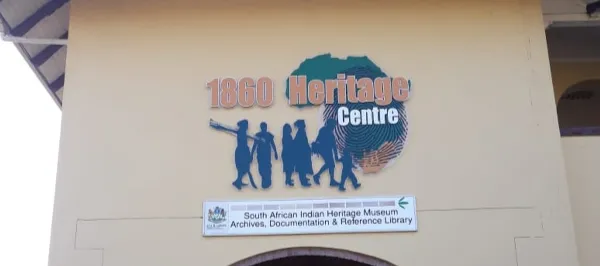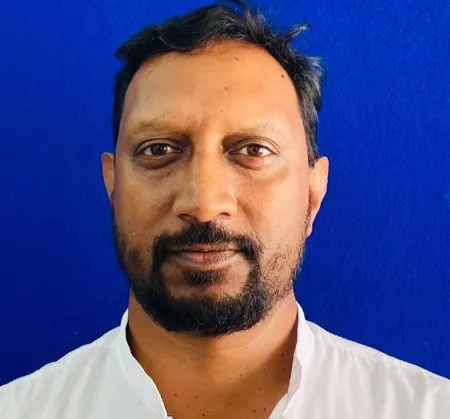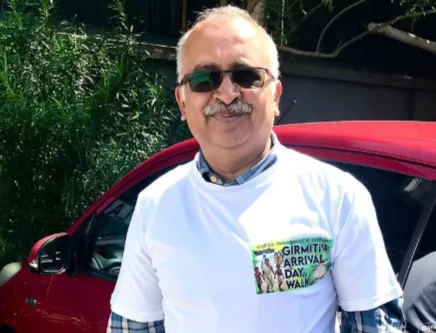1860 Heritage Centre dismisses claims of exclusion and division
Story of indenture

The 1860 Heritage Centre in Derby Street opened in May 2017.
Image: Jolene Marriah-Maharaj.
THE 1860 Heritage Centre in Durban has strongly refuted claims that it excluded the Indian/Girmitiya community and created division through language.
Selvan Naidoo, director and curator at the centre, said their approach aimed to be inclusive of all South African histories related to indenture.
The claims were shared on a WhatsApp group, called the African Hindu Party, by Praneal Singh, who is affiliated to the Hindu Unity Forum South Africa.
In the message Singh said: “It’s unfortunate that (the) 1860 Heritage name excludes Indian/Girmitiya. Further to say that they also create a division among us based on language.
“It’s about time (the) entire board and management be dissolved, and we the SA Indian/Girmitiya nominate democratically a proper board and management. Which can’t be based on dividing us.”
Naidoo said the centre, which was an agency museum of the KwaZulu-Natal (KZN) Department of Sports, Arts and Culture, covered a range of history from slavery, indenture, culture and heritage to the freedom struggle.

Selvan Naidoo
Image: File
He said the centre brought together all these histories under one roof with a focus on telling the story of indenture as one part of the many stories that made up South Africa’s collective history.
“Including Indian/Girmitiya to the centre excludes people based on ethnicity and race, creating an ethnocentric museum. The use of the Bhojpuri word Girmitiya is widely used for describing indentured workers from the North of India.
“In South Africa, 101 468 of the total of 152 184, or 66% of indentured workers, came from the South of India, Tamil Nadu and Andhra Pradesh districts. Using the word Girmitiya to exclusively describe indentured workers in South Africa dismisses and excludes those 101 468 indentured workers from telling the full story of indenture, specifically in South Africa,” he said.
Naidoo said the work of the centre spoke for itself.
“Scrolling through our social media streams provides ample evidence of us catering to the needs of a diverse Indian African community living in South Africa.”
Naidoo added that the board was legitimised through the administration and functionaries of the KZN Department of Sports, Arts and Culture.

Praneal Singh
Image: File
“Praneal Singh, who is supported by spurious individuals, masks these utterances with their desire to take over progressive structures. In addition, Singh, who is the admin of many WhatsApp groups, purposely targets progressive organisations and individuals by spreading hate speech and false information with a view to taking control of these community structures to establish their own power bases.
“His views on the establishment of the African Hindu Party are ethnocentric and racist, often attacking and excluding Muslims and Christians from his WhatsApp groups,” he said.
Naidoo said the centre was pursuing its legal options.
“We have engaged with a lawyer, as Praneal Singh has often targeted the centre, going to the extent of defacing an invitation to attend our 2024 Annual Memorial Lecture, calling for people to boycott the event.
“His critique of the work of progressive structures gets bolder with time. His divisive tactics are evident to many, with so many people calling him out for his behaviour,” he said.
Singh declined to comment.
Some of the comments on social media in response to Singh's messages on WhatsApp:
- Jerald Vedan: The 1860 Heritage Centre was created as a home of memory, to preserve the story of our ancestors and to pass it on with truth and dignity. It must never be reduced to a platform for division or political point-scoring. Yes, our forefathers signed indenture agreements. But only in Fiji and the Caribbean were those contracts called Girmits, giving rise to the term Girmitiya. Here in South Africa, our people were known as indentured labourers, and their story deserves to be told in its own authentic way. The centre is not about excluding anyone. It bring together the story of Indian presence in South Africa, namely: the indentured workers who arrived from 1860, and the Passenger Indians who traded, built businesses, and stood with others in the struggle for freedom. Also there were Indians who came as " slaves" to the Cape from about 1652, until slavery was abolished. Our Heritage Centre exists to honour diverse roots and show how they came together. For that reason, the centre must remain a guardian of truth, inclusivity, and unity. It belongs to history itself, and to every ancestor whose sacrifice helped build the community we are part of today. Let us work together to protect it, strengthen it, and ensure it tells the full, proud, and painful truth of where we come from.
- Nirode Bramdaw: I find this whole argument raised by Praneal et al to be ill-informed at the very least. Unlike Fiji, Jamaica, Guyana, Surinam, Mauritius, etc, where the majority of indentured labourers came from from Uttar Pradesh and Bihar. In South Africa or Natal more specifically, we have the majority of indentured labour from Tamil Nadu and Andhra Pradesh. The Hindi speakers were outnumbered 3 to 1. By using the word Girmitya for our 1860 Heritage Centre is exclusionist of all and particularly the majority of Indian South Africans. The fact remains that the first ship to arrive was the Truro from Madras.
- Trisha Gokool Parshotam: It's people like that this that cause major divides in the Indian community. All Indian descendants should be proud of the Heritage Center and the work that is does instead of focusing on the name. What is often forgotten when egos are involved, is the hard work that goes into the maintenance and preserving of this legacy we have. Before uneducated comments are made, the essence of the centre and its purpose needs to be understood.
Related Topics: